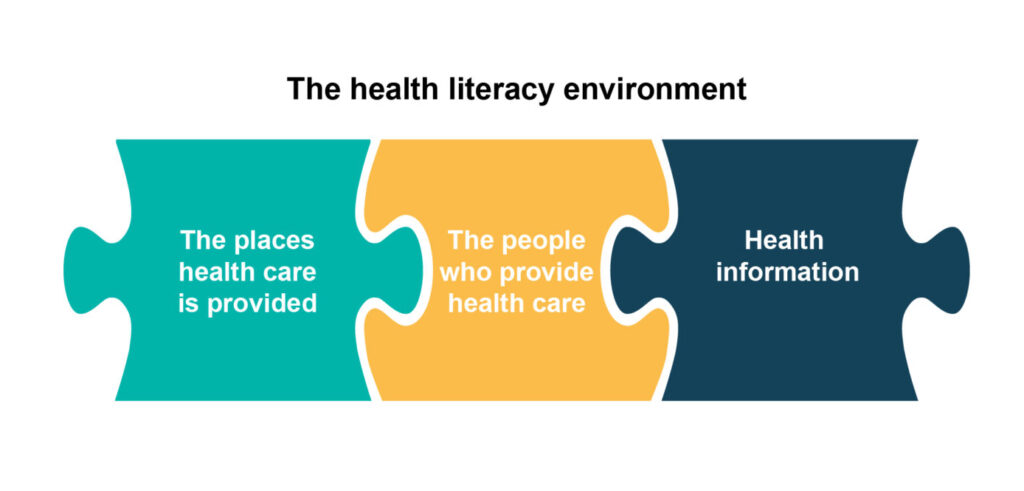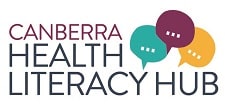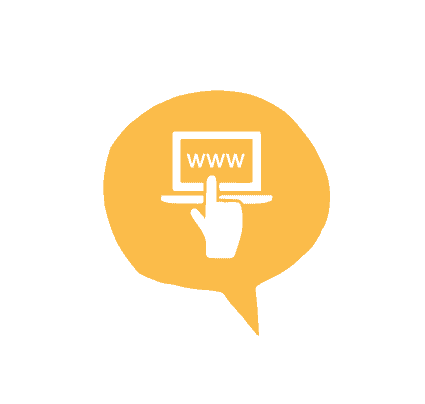The Health Literacy Environment
The health literacy environment is the way health information and services are provided, and the things that make it easier or harder for people to access, understand, and use information and services. It includes:
- the buildings where care is provided – accessibility, signage and maps,
- health information – how clear it is, how easy is it to get
- the language and terminology used – plain English or jargon
- cultural norms within the organisation and the community – role of consumers and staff, person-centred care and shared decision making
- the systems – policies and processes, forms, referral pathways, how easy it is to make appointments, links between services and information sharing
- how staff and clinicians communicate with consumers and carers.

The way the health system works and how complex it is influences how consumers make decisions and manage their health care[1]. Health care settings and systems can make it easier or more difficult for consumers to navigate, understand, and use information and services. The more demands placed on a consumer’s health literacy skills by the health care environment, the poorer their health outcomes can be[2].
Health literacy is the interaction between the skills that people have and the demands that systems make[3].
The health literacy environment also includes how people who work within the healthcare system communicate. Clear communication between consumers and health professionals is critical for shared decision‑making and informed consent.
The health literacy environment is influenced by systems, policies, and regulations at organisational, state or territory, and national levels[4]. Some of the influences are:
- the design and layout of health services, including hospitals,
- accessibility and transport,
- medication packaging and design,
- referral pathways,
- health education, health promotion and social marketing campaigns,
- the design of public health programs,
- care coordination processes, and
- links between in-patient and out-patient services.
The health literacy environment is complex but consumers, carers and health professionals can improve it. There is information about action you can take here, and resources to help you here.
References:
[1] Australian Commission on Safety and Quality in Health Care. Health literacy: Taking action to improve safety and quality. Sydney: ACSQHC, 2014
[2] R. Rudd, D. Renzulli, A. Pereira, L. Daltroy. Literacy Demands in Health Care Settings: The Patient Perspective in Understanding Health Literacy: Implications for Medicine and Public Health; 2005
[3] Rudd, R.E. The Health Literacy Environment Activity Packet: First Impressions & Walking Interview. On-line tools. Health Literacy Studies. Hsph.harvard.edu/healthliteracy
[4] Australian Commission on Safety and Quality in Health Care. Health literacy: Taking action to improve safety and quality. Sydney: ACSQHC, 2014
Last Updated on 27 March, 2024.




